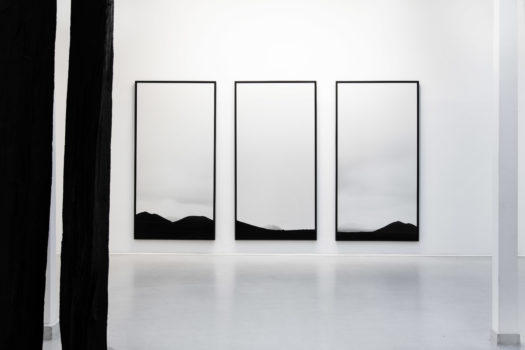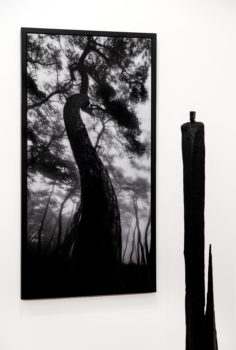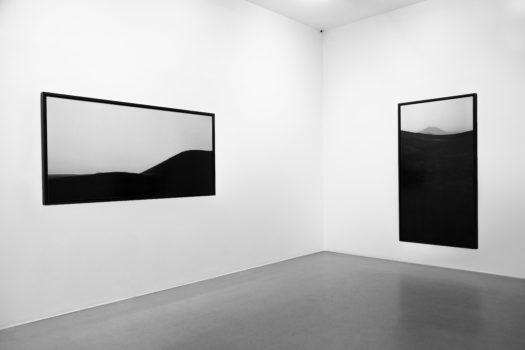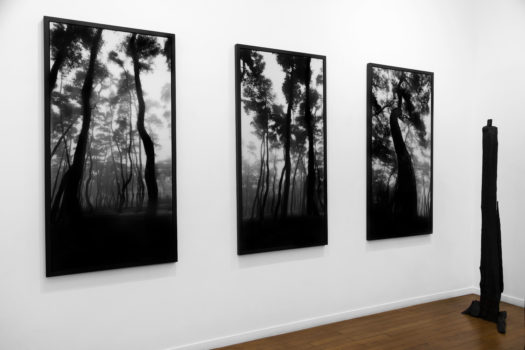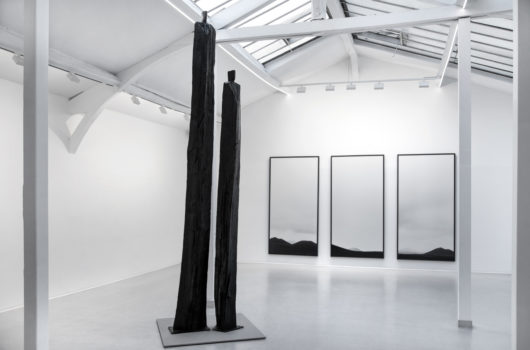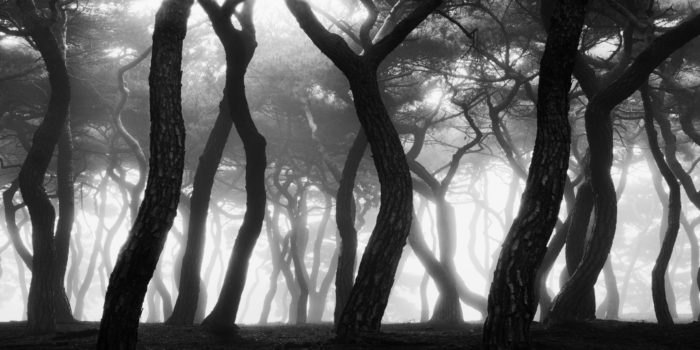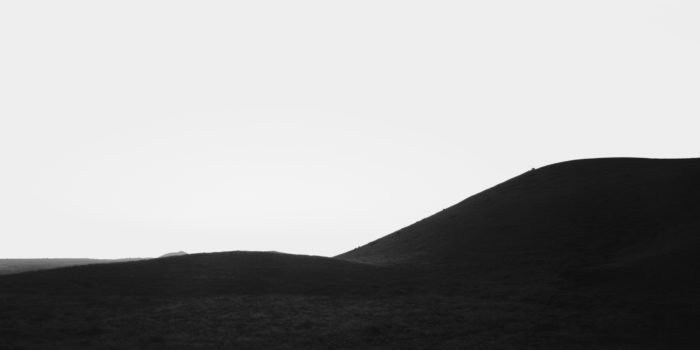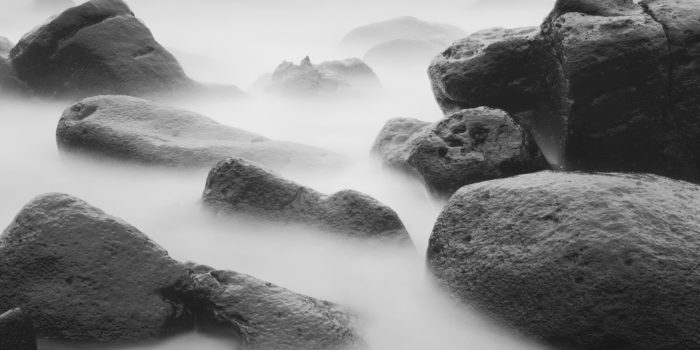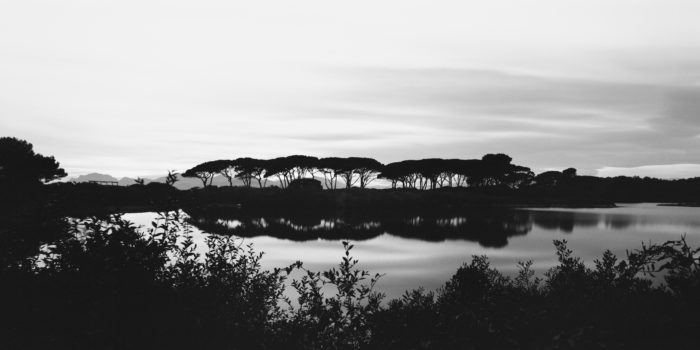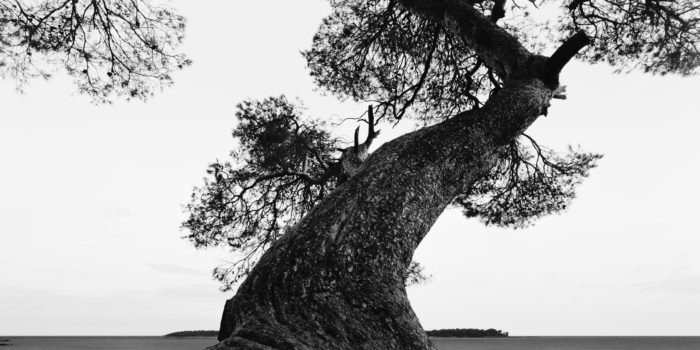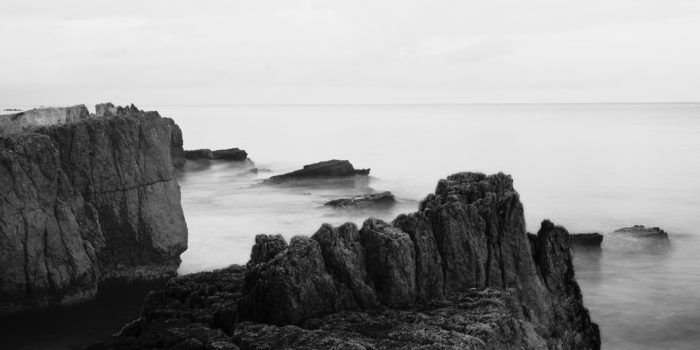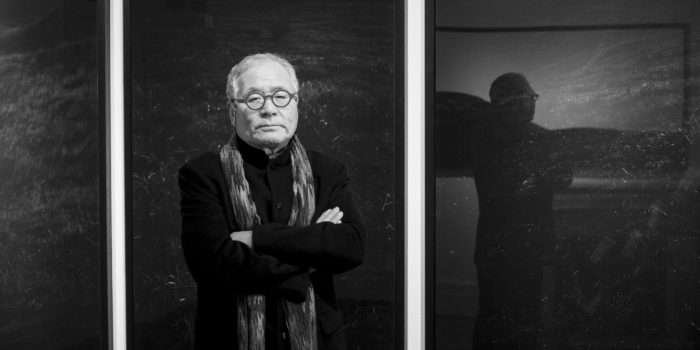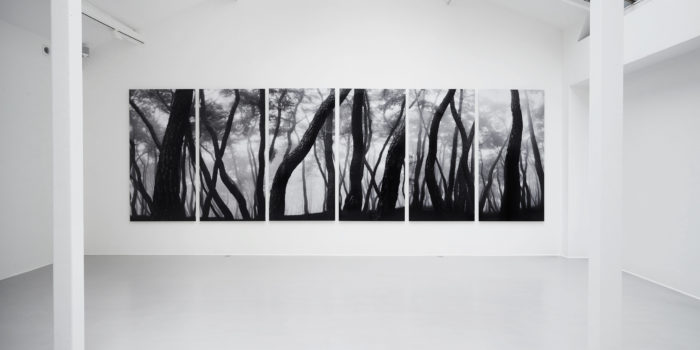Bae Bien-U | Orum Exhibition to discover from february 18, 2021 at Galerie RX NYC.
“Catch the Wind” The “Orum” series that Bae Bien-U has been pursuing for the past twenty years is driven by the artist’s desire to reveal the intangible through the materiality of photography, to capture the invisible element that is the wind, which can be disproportionately strong when it becomes a typhoon. “We can hear the wind but we can only see is through water, trees or mountains”. Hence the other name he associates with this set, “Windscape”.
His formats are always monumental, and while in his pine forests he favors the immersion of the spectator, here, by playing on the horizon line that he places either very high or very low, he keeps us at a distance. His dark mountains with feminine curves stand out against clear skies in composition flirting with abstraction. These tight frames, which he sometimes cuts into polyptychs, are mediative spaces where only the mind can penetrate. Bae Bien-U seeks testimonies of spirituality in the landscapes he travels through, a feeling reinforced here by the purification of the compositions.
Through the minimalism that emerges, one can only make the link with the Japanese photographer Hiroshi Sugimoto. “Orum” means little volcanic mountains These images were taken on the volcanic islands of Jeju, the largest of Korea’s 3,350 or so islands, at 85 km to the south and classified es a UNESCO World Heritage in 2007. Here is Mount Halla, the highest point in the country in 1,950 meters, and the small volcanic hills are called “oreum” in dialect. For Bae Bien-U, there are three treasures on this island: the wind, the “women of the sea” who dive up 10 meters in apnea and its turquoise waters.
But Bae Bien-U is not looking for heavenly views. He walks there very early in the morning, “at the time when the fisherman is going to set his nets” he says, having fun, and when the weather is foggy for beautiful black and white contrasts. Bae Bien-U, landscape photographer He defines himself as a landscape photographer, mark by the way Ansel Adams revealed the beauty of landscapes, how Edward Weston transfigure nature, how László Moholy-Nagy has mastered the light.
Influenced by traditional Chinese and Korean landscapes painting, and especially by the work of Chung Sun (1676-1759), a painter of the Choson dynasty (1392-1910), Bae Bien-U captures the beauty of the Korean soul through symbolic landscapes where man is always absent. He is only one element of a great whole. Carried by oriental thought, it reminds us that nature has a central place and that we can only live in harmony with it.
